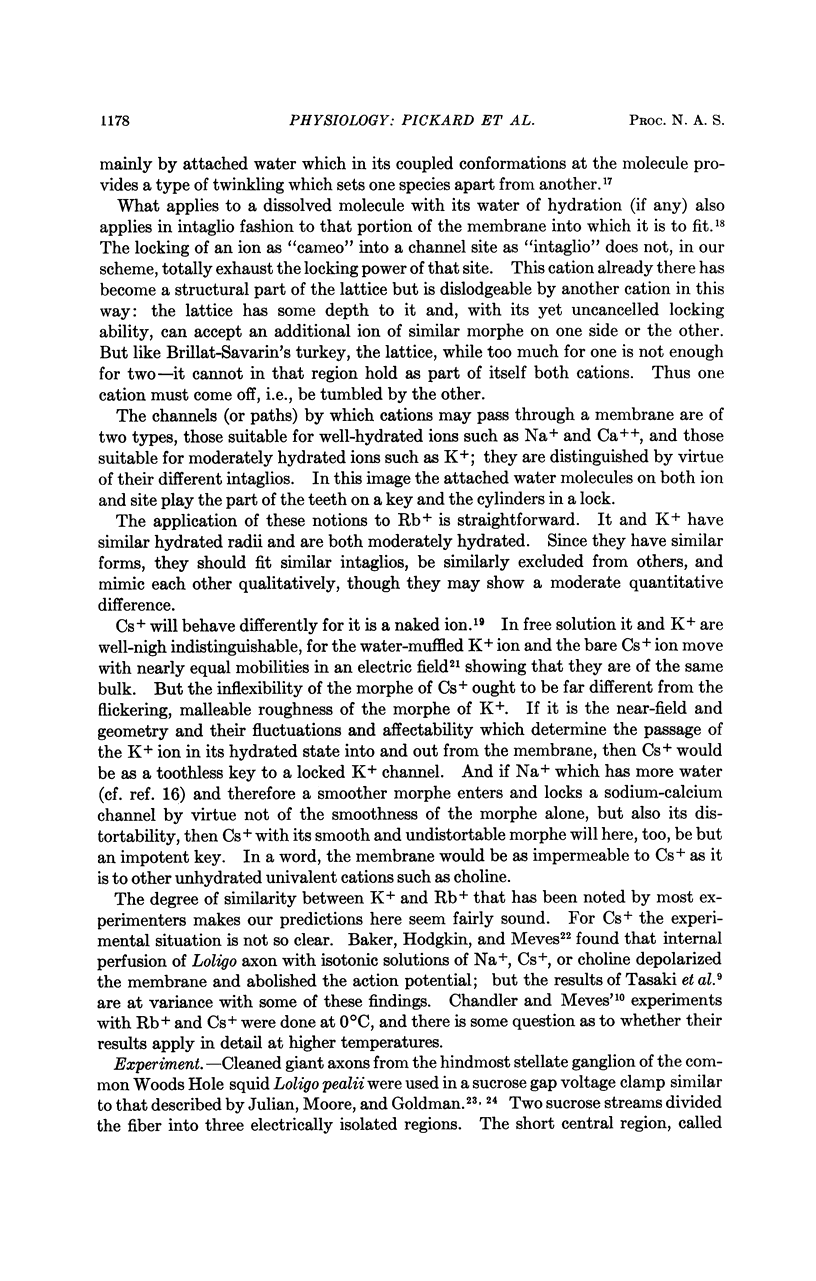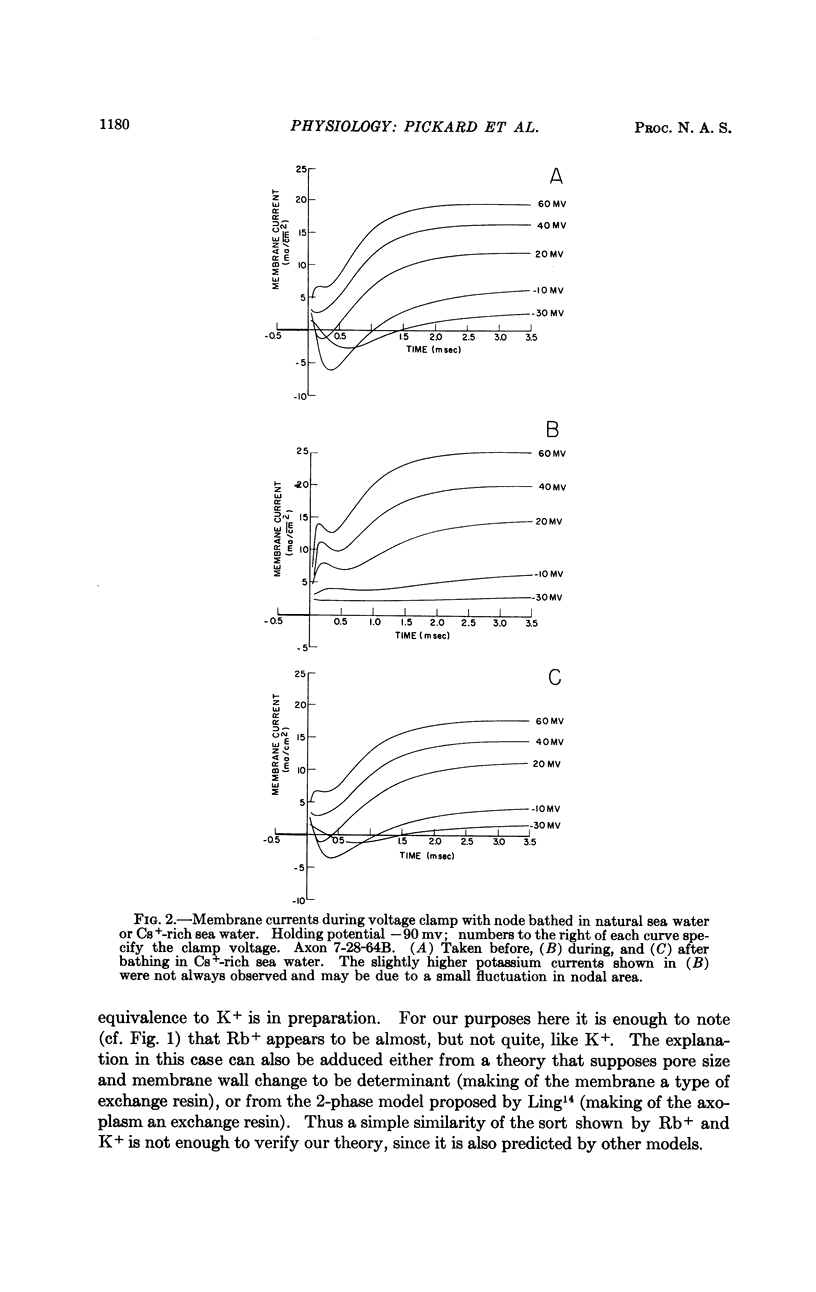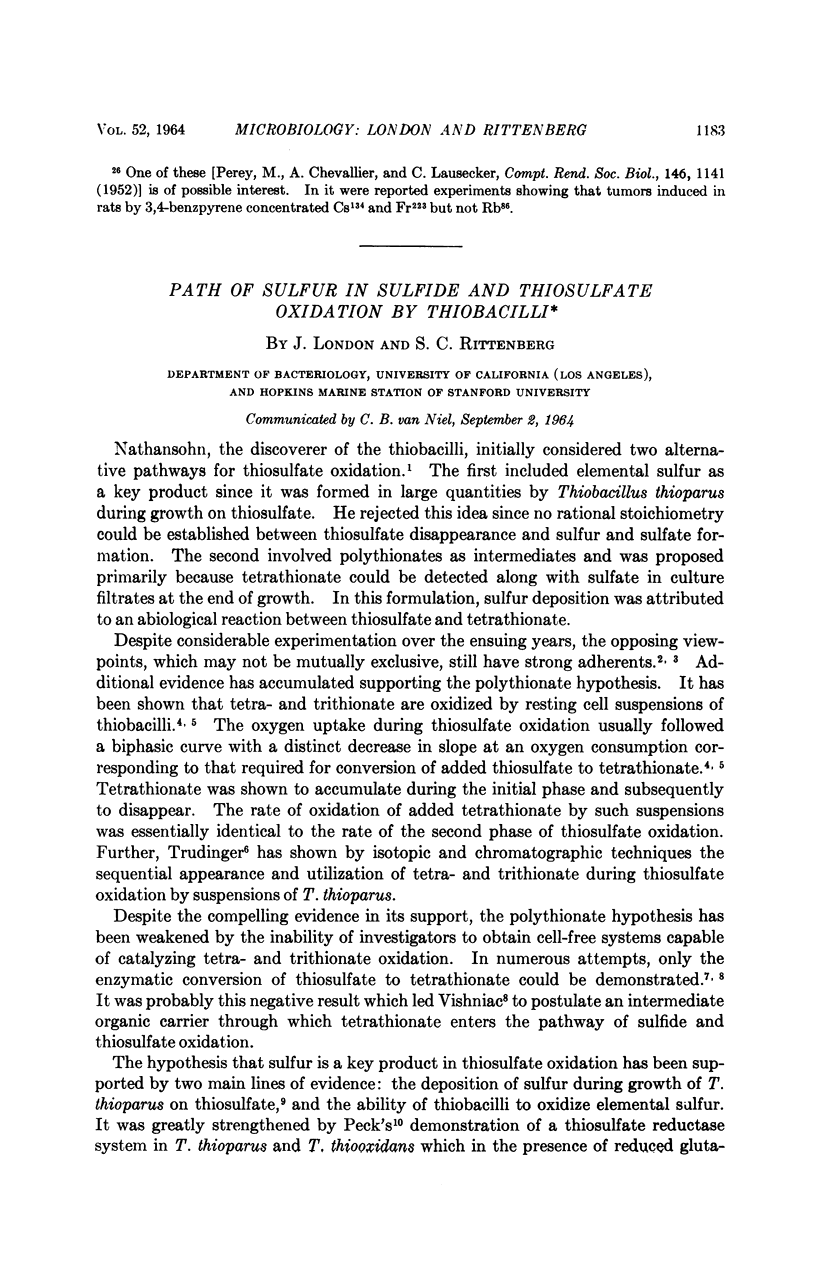Full text
PDF






Selected References
These references are in PubMed. This may not be the complete list of references from this article.
- ARAKI T., ITO M., KOSTYUK P. G., OSCARSSON O., OSHIMA T. Injection of alkaline cations into cat spinal motoneurones. Nature. 1962 Dec 29;196:1319–1320. doi: 10.1038/1961319a0. [DOI] [PubMed] [Google Scholar]
- BAKER P. F., HODGKIN A. L., SHAW T. I. The effects of changes in internal ionic concentrations on the electrical properties of perfused giant axons. J Physiol. 1962 Nov;164:355–374. doi: 10.1113/jphysiol.1962.sp007026. [DOI] [PMC free article] [PubMed] [Google Scholar]
- EISENMAN G. THE INFLUENCE OF NA, K LI, RB, AND CS ON CELLULAR POTENTIALS AND RELATED PHENOMENA. Bol Inst Estud Med Biol Univ Nac Auton Mex. 1963 Aug;21:155–183. [PubMed] [Google Scholar]
- HODGKIN A. L., HUXLEY A. F. Currents carried by sodium and potassium ions through the membrane of the giant axon of Loligo. J Physiol. 1952 Apr;116(4):449–472. doi: 10.1113/jphysiol.1952.sp004717. [DOI] [PMC free article] [PubMed] [Google Scholar]
- Hodgkin A. L. The effect of potassium on the surface membrane of an isolated axon. J Physiol. 1947 Jul 31;106(3):319–340. doi: 10.1113/jphysiol.1947.sp004215. [DOI] [PMC free article] [PubMed] [Google Scholar]
- JULIAN F. J., MOORE J. W., GOLDMAN D. E. Membrane potentials of the lobster giant axon obtained by use of the sucrose-gap technique. J Gen Physiol. 1962 Jul;45:1195–1216. doi: 10.1085/jgp.45.6.1195. [DOI] [PMC free article] [PubMed] [Google Scholar]
- KOSHLAND D. E., Jr CORRELATION OF STRUCTURE AND FUNCTION IN ENZYME ACTION. Science. 1963 Dec 20;142(3599):1533–1541. doi: 10.1126/science.142.3599.1533. [DOI] [PubMed] [Google Scholar]
- LETTVIN J. Y., PICKARD W. F., MCCULLOCH W. S., PITTS W. A THEORY OF PASSIVE ION FLUX THROUGH AXON MEMBRANES. Nature. 1964 Jun 27;202:1338–1339. doi: 10.1038/2021338a0. [DOI] [PubMed] [Google Scholar]
- MULLINS L. J. An analysis of pore size in excitable membranes. J Gen Physiol. 1960 May;43:105–117. doi: 10.1085/jgp.43.5.105. [DOI] [PMC free article] [PubMed] [Google Scholar]
- PEREY M., CHEVALLIER A., LAUSECKER C. Sur la fixation comparée de l'actinium K, du césium 134 et du rubidium 86 dans les sarcomes et les granulomes experimentaux chez le rat. C R Seances Soc Biol Fil. 1952 Jul;146(13-14):1141–1143. [PubMed] [Google Scholar]
- RELMAN A. S. The physiological behavior of rubidium and cesium in relation to that of potassium. Yale J Biol Med. 1956 Dec;29(3):248–262. [PMC free article] [PubMed] [Google Scholar]
- TASAKI I. Permeability of squid axon membrane to various ions. J Gen Physiol. 1963 Mar;46:755–772. doi: 10.1085/jgp.46.4.755. [DOI] [PMC free article] [PubMed] [Google Scholar]
- TASAKII, WATANABE A., TAKENAKA T. Resting and action potential of intracellularly perfused squid giant axon. Proc Natl Acad Sci U S A. 1962 Jul 15;48:1177–1184. doi: 10.1073/pnas.48.7.1177. [DOI] [PMC free article] [PubMed] [Google Scholar]


